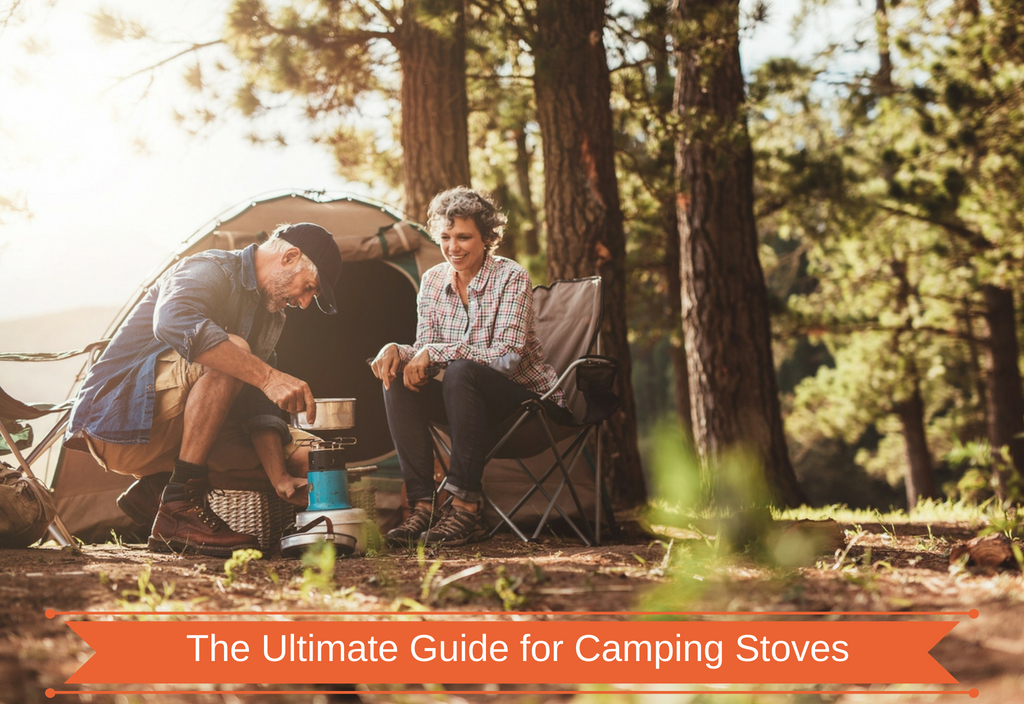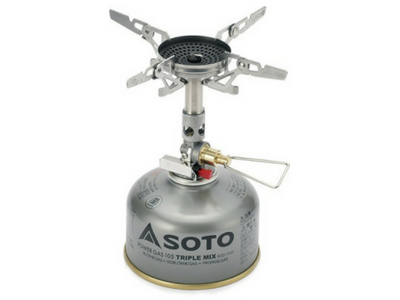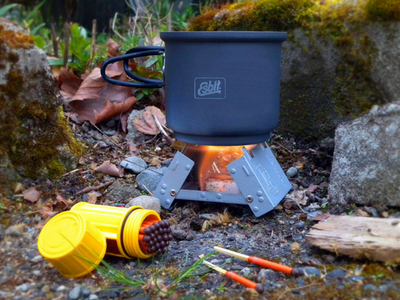 A warm meal after an adventurous day in the mountains can make your experience in the wilderness more than a thrill. You can be your own chef with the right camping stove in the backcountry. The good news is that it has become quite manageable to make your meals outdoors with a wide choice of camping stoves. The bad news is that there are so many options in the market that you may be confused about what to buy.
A warm meal after an adventurous day in the mountains can make your experience in the wilderness more than a thrill. You can be your own chef with the right camping stove in the backcountry. The good news is that it has become quite manageable to make your meals outdoors with a wide choice of camping stoves. The bad news is that there are so many options in the market that you may be confused about what to buy.
This ultimate guide is designed to help you in your buying choice of a camping stove. We will look at the fuel type, burners, winter and windy weather performance and your cooking needs.
Fuel Type
First, consider the fuel type. Do you want a canister, liquid fuel, wood, alcohol or solid fuel stove?
Canister stoves are compact, easy to use and require the least maintenance. These are isobutane and propane fuel systems that are ideal for overnight stay.
Pros
- compact
- easy to use
- no priming, pumping or maintenance of any type
Cons
- slightly expensive
- don’t work well in the extreme cold.
Liquid fuel stoves are perfect for big group outings. They are a bit bulkier and require much more maintenance over time. On the other hand, they are an ideal fit for winter trips as they work well in below freezing temperatures. These stoves mainly use white gas, which is cheaper than canister fuel, but they can use other types of fuel as well. Hikers can use them both for boiling and simmering of their camping food.
Pros
- multifuel
- cold weather/high elevation
- larger groups
Cons
- heavier than most stoves
- require much maintenance
- more complicated to use – priming required.
Alcohol stoves are the cheapies and lightest among the camping stoves. Thru-hikers used them a lot in the past due to their lightweight and convenience. You can find denatured alcohol in many parts of the world. They use Heet, a gas-line antifreeze made for cars, which you can find at almost any gas station.
Nowadays few people use such type of stoves because of their low efficiency and low performance under certain weather conditions.
Pros
- lightweight
- you can find fuel anywhere in the world
Cons
- may produce heavy soot
- slow cooking time
- does not perform well in the wind and under cold temperature
- less efficient.
Wood stoves are the old-fashioned way of cooking in the wilderness, but they are a favorite for many hikers. They are convenient in the sense that you do not need to carry fuel and they can be much more fun. They are just like a campfire, but more convenient and quicker. It is clear, though, that you have to go through a lot more effort with a wood stove than you do with gas or alcohol stoves, which may be quite tiring after a long trip day.
Pros
- ultralight hiking
- can be without any fuel cost
- renewable energy
Cons
- slow cook times
- blackens the bottom of your pot
- may be hard to find wood when wet
- requires much practice and effort
- can be unpleasant after long trips.
Solid fuel stoves are a very convenient alternative. They use Esbit fuel tabs. They are virtually smokeless. Each tablet burns approximately 12 minutes and up to 1300 °F. One tablet boils 500 ml of water in about 8 minutes, which is a bit slow like alcohol stoves. They are also susceptible to wind.
Pros
- light and compact
- inexpensive stove
- easy to use
Cons
- expensive fuel
- poor performance in wind
- slow cooking time.
Burners Are What Make the Cooking Fast
Your cooking speed and efficiency depend on the number of burners and the burner power. No wonder that two-burner stoves are big-time sellers. They also come with adjustable legs. With two or even three-burner stoves you will have your cooking done in a timely and effective manner just like you have it at home. These stoves are perfect for large gatherings, even though they are heavier and bulkier than regular one-burner stoves.
Not only does the number of burner matters, but also the burner power. BTUs or British Thermal Unit, determines the performance of gas stoves. The higher the BTU, the better the performance of your stove. A stronger flame in your camping oven will allow you to cook faster just like you are at home. Fuel consumption becomes an issue, though. For a more powerful flame, 20,000 BTUs and up are recommended.
Winter and Windy Weather Performance
Winter camping is a different challenge. You need stoves that perform well in below-freezing conditions. The tip-top of camping stoves under winter conditions are the liquid fuel stoves. The other stoves may do well in winter but not under extreme cold.
The wind may also make your stove sensitive. Integrated canister stoves perform better in windy conditions and alcohol stoves, woods stoves and solid fuel stoves perform very poorly.
Of course, the first thing to do is to find a protected space. Many stoves have windshields that cover three sides of the stove. As a general rule, the smaller the footprint, the better the wind resistance.
Your Cooking Needs Matter
Most backpackers merely need boiling water for rehydrating food. Manufacturers design most of the stove models specifically for that purpose, not necessarily to cook. But if you want to cook a more elaborate meal, you will need a stove with good simmer control. You can find this feature in some canister stoves and liquid fuel stove but not always. You will also need a sturdy stove with a broad base that will handle big pots better if you are planning to have large gatherings.
Final Remarks
The type of stove you may want to get depends on your camping needs. If you spend a lot of time in the wilderness, it might make sense to pay a little more for a stove that is more durable and stands all kinds of winter and windy conditions. If you are planning to have large gatherings, then it will make sense if you spend one time and get a two burner or even three-burner stove. After all, they will make your cooking a lot easier after a heavy day in the mountains. After you made your top choice, we recommend you test the stove right after your purchase, and if it doesn’t work quite right, you have the option of returning or exchanging it.





